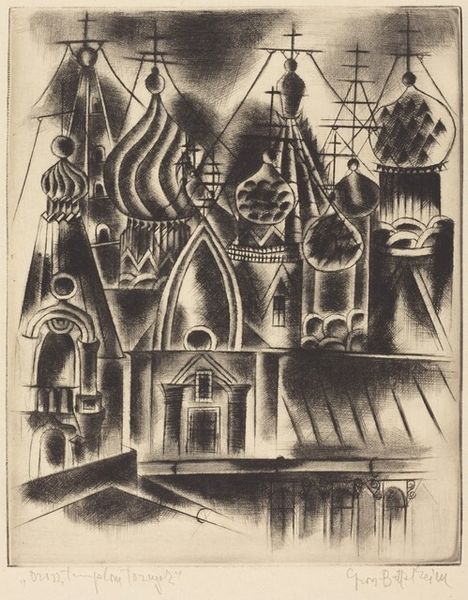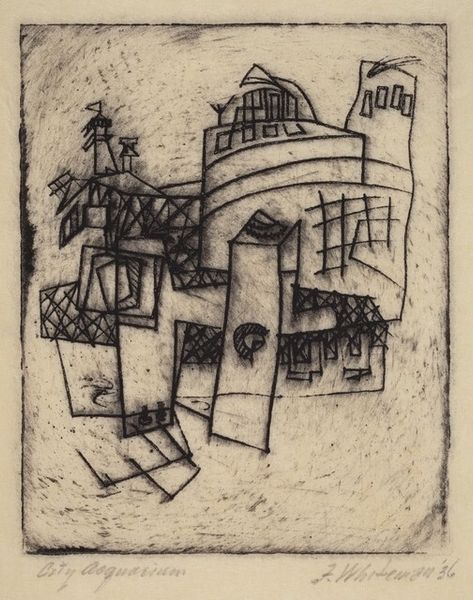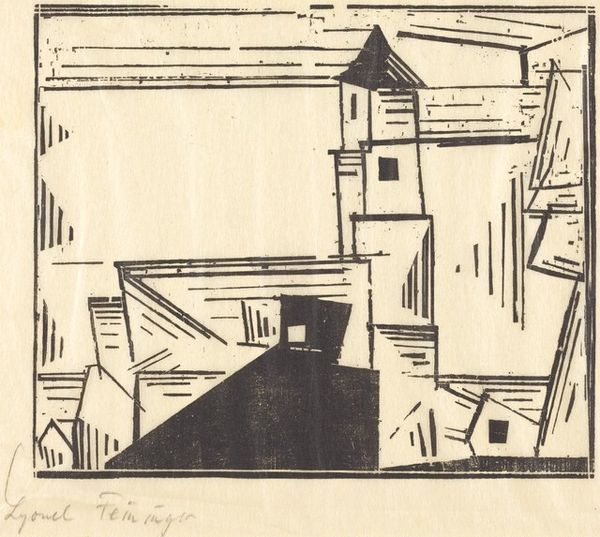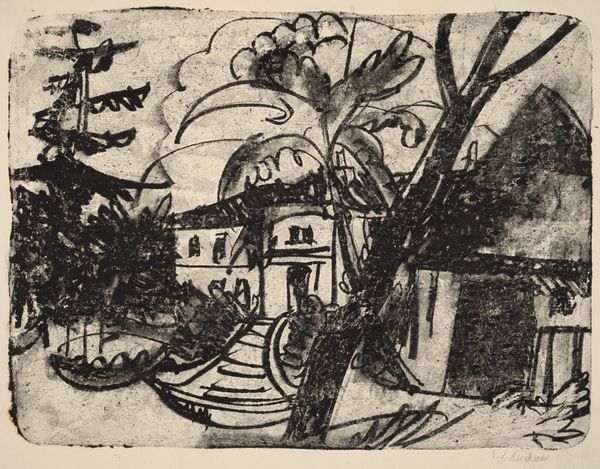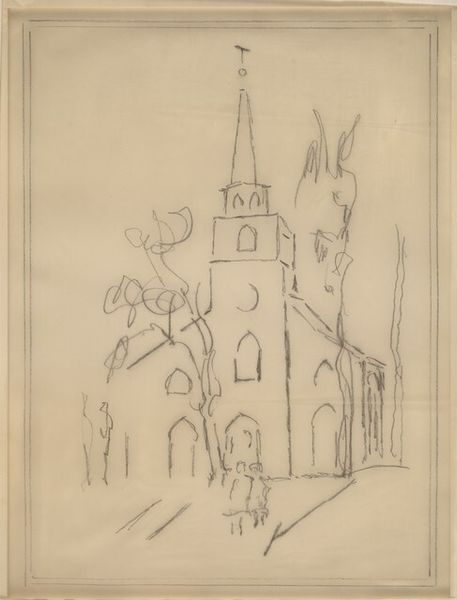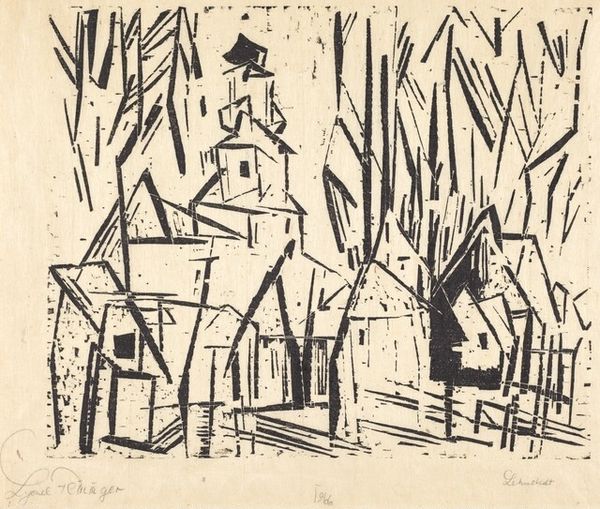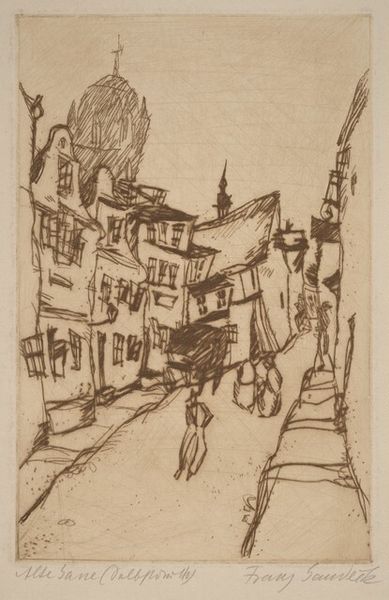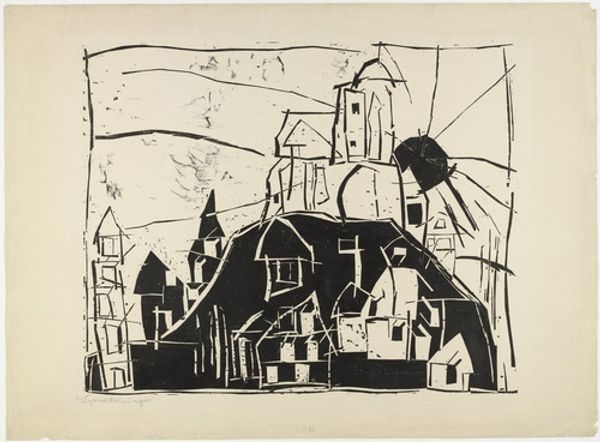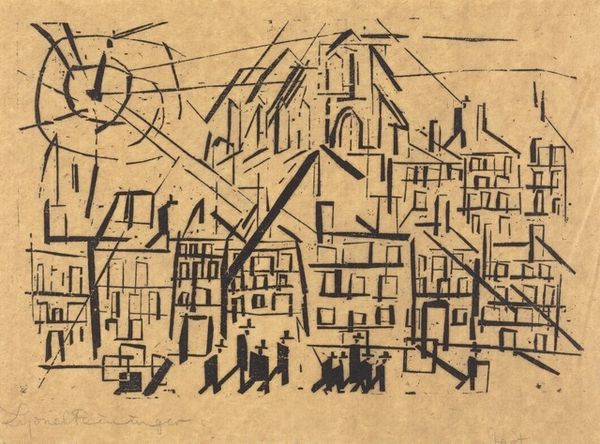
drawing, print, etching, ink
#
drawing
#
pen drawing
# print
#
etching
#
ink
#
geometric
#
cityscape
#
modernism
Copyright: National Gallery of Art: CC0 1.0
Curator: Jacob Kainen created this work, titled "Residential Facade," in 1949. It's an etching in ink, giving it a striking graphic quality. Editor: It does feel almost like an architectural blueprint, albeit one infused with a rather whimsical, slightly menacing energy. It makes me think of a haunted Victorian dollhouse. Curator: I find the blend of the representational and the almost abstract architectural details particularly interesting. Kainen evokes familiar imagery, but then fractures and rebuilds it. Think about the steeple on the building, practically screaming with authority against the swirling ether of the sky above, contrasted with the rigid symmetry and clean lines that frame it. What comes to mind? Editor: Right away, the "Residential Facade" speaks to a real engagement with the craft of printmaking. Etching relies on acid's effects on the metal plate; the contrast between precise lines and areas of rougher, more unpredictable texture makes it captivating. You can sense the labor involved, not just artistically but materially. Curator: I'm fascinated by the windows and how they each present different interior states. Some are vacant and hollow, while one peeks open slightly revealing a mysterious face staring out. Editor: That reminds me of how economic factors would absolutely determine the use of space at this time. Are these residences overcrowded? What does "facade" even mean in terms of what's happening inside, beyond what's presented to the world. The drawing gestures toward the realities of post-war urban life, but obscures them just enough. Curator: I see how those issues speak through, almost inadvertently adding layers of socio-economic consideration that enrich what, at first, could seem a simple architectural rendition. Kainen may have aimed at something straightforward, but that the times come charging forward in how we, in hindsight, see the drawing itself is one thing that stands out. Editor: Yes, seeing this, the process of production, the era of material scarcity and social constraint all linger as strong points. There's nothing naive about how buildings communicate culture.
Comments
No comments
Be the first to comment and join the conversation on the ultimate creative platform.
